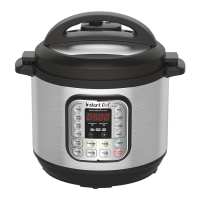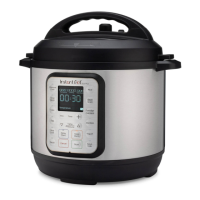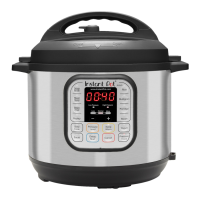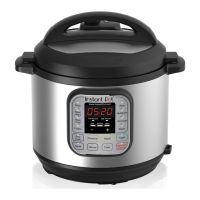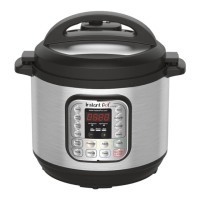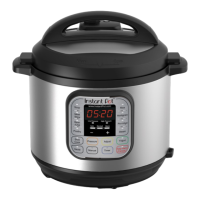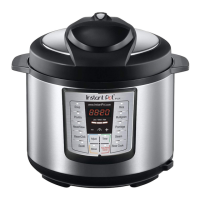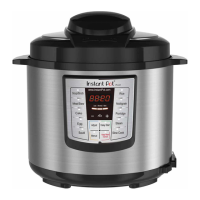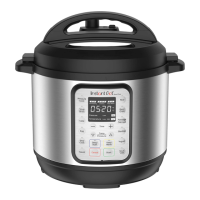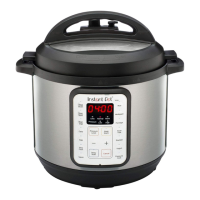9
2. Check whether all parts on the lid are assembled properly
Check the oat valve and exhaust valve for obstrucons. Make sure that the sealing ring is
well seated inside its holding rack, the an-block shield is installed properly and the oat
valve can move up and down easily.
3. Take out the inner pot, and put in food and liquid
The total amount of food and water should NEVER exceed the
maximum level marking of the inner pot. It is recommended that
you do not ll the unit over 2/3 full. When cooking foods that
expand during cooking such as rice, beans or dried vegetables,
do not ll the unit over 1/2 full. Over lling may risk clogging the
vent pipes and developing excess pressure. This could also cause
spillage and may damage to the unit.
4. Place the inner pot inside the cooker housing
Before that, be sure to remove foreign objects and wipe dry the outside of the inner pot and
the heang element inside of the cooker.
Aer pung the inner pot inside the housing, rotate the inner pot slightly to ensure good
contact between the inner pot and the heang element.
5. Close the lid completely
Hold the lid handle and put the lid on the cooker, with the mark on the lid and the
“Open” marks on the housing rim are aligned. Rotate the lid clockwise approximately 30
degrees unl the mark on the lid is aligned with the “Close” mark on the
housing rim.
Instant Pot has a safety feature to disable the cooker and the display ashes "Lid" if the lid is
not posioned correctly. When using "Soup", "Poultry", "Meat/Stew", "Bean/Chili",
"Mulgrain", "Rice", "Steam", "Porridge" and "Yogurt", the lid should be fully closed. When
using "Sauté", the lid should be open. "Keep Warm" and “Slow Cook” works with the lid
either opened or closed.
6. Posion the steam release handle properly
Please note that it is perfectly normal and necessary for the steam release handle to be

